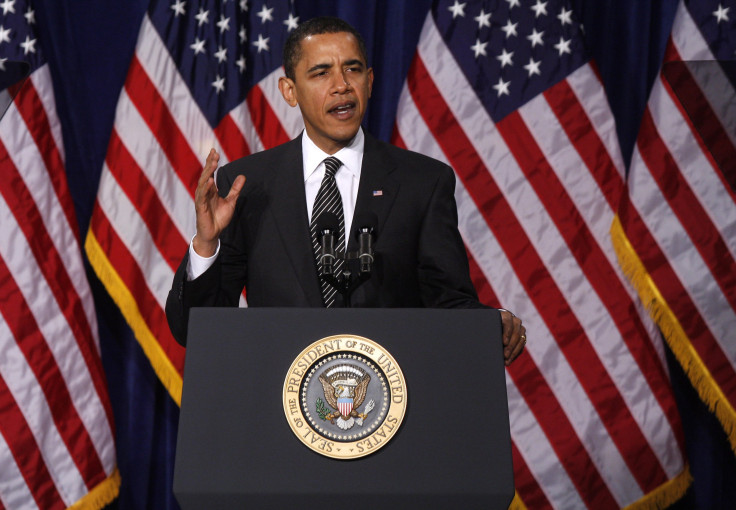Barack Obama Housing Policy: Is It Really Working?

President Barack Obama traveled to Arizona six years ago to unveil a $75 billion plan to keep millions of Americans in their homes. On Thursday, he’ll return to the state to address a new plan to make it easier for Americans to buy homes while also touting the recovery of the housing market as he gears up to deliver his State of the Union address later this month.
But while median home prices are rising, more homes are being sold, rental vacancy rates are plummeting and housing is more affordable than it was six years ago, Obama’s ambitious proposal from February 2009 still hasn't fully delivered on its promises. Part of that $75 billion was to be spent to help 3 million to 4 million homeowners stay in their homes, but the initiative, called the Home Affordable Modification Program, so far has fallen short of that goal. Since April 2009, only 1.4 million permanent mortgage modifications were made under the program, according to the latest monthly "housing scorecard" from the Obama administration. The program was also supposed to help homeowners who haven't yet missed a mortgage payment, but thousands were denied for that reason, according to the New York Times.
Another initiative under the $75 billion program was aimed at assisting homeowners in refinancing their mortgages, but that also hasn't helped as many people as the administration promised. The goal was to reach 5 million borrowers, but so far only 3.2 million mortgages have been refinanced through the Home Affordable Refinance Program.
Critics of Obama's housing policy said the president didn't go far enough to protect homeowners. The White House turned away a congressional proposal to use billions of dollars to buy mortgages because it thought distressed homeowners would be saved by a turnaround in the housing market.
While new home and existing home sales increased, the latest scorecard also showed that the start of foreclosure proceedings increased 12 percent from September to October and completed foreclosures jumped 22 percent during that timeframe. The administration conceded that more work needs to be done. "Encouraging news notwithstanding, there is a need to continue with recovery efforts to foster home sales, help homeowners that are underwater, and reduce mortgage delinquency rates that remain elevated," the scorecard states.
Among Obama's critics is Dennis Smith, president and chief executive of Home Builders Research Inc., a real-estate consulting firm in Las Vegas -- the area hardest hit by the mortgage crisis. While permits for new construction in southern Nevada have more than doubled since the depths of the recession, from 3,200 in 2007 to about 7,000 today, it’s a far cry from the peak of 34,000 permits a year before the 2008 financial crisis. At the height of the recession, 70 percent of home mortgages in the area were underwater. Now, only 28 percent of mortgages are upside-down in Nevada, still the worst record in the country.
“It didn’t help Nevadans as much as the rest of the nation because we were so far underwater,” Smith said of Obama’s housing policies. “When you’re that much underwater, the national standards that were set didn’t really have a big effect on a large portion of the population here.”
Housing is more affordable now than in 2009, but the credit crunch means home ownership isn’t as easily obtainable as it should be, according to the Housing Affordability Index, which measures how the average American family can afford the average home.
“Houses became more affordable to buy, the problem is getting the financing for it,” Johnny Love, a realtor with Phoenix-based Arizona Housing Experts, said. And renters in the area looking to buy their first home with government loans are often outbid by out-of-state investors who can pay for a home in cash, he said.
Nationally, median new home prices have risen precipitously since 2009, from about $217,000 then to about $269,000 in 2013, according to federal statistics. Existing home prices have also increased during that span, from about $173,000 in 2009 to about $197,000 in 2013. The numbers of existing and new homes being sold are also on the mend.
Senior Obama adviser Dan Pfeiffer said the president's 2009 initiative, dubbed the Homeowner Affordability and Stability Plan, contributed to the national housing market comeback. “In 2009, the housing market was in freefall. Thanks in part to President Obama’s swift intervention when he took office, our housing market is on much firmer footing. Rising home values have helped millions of families who were underwater on their mortgages, and new foreclosures are at their lowest levels since 2006,” Pfeiffer wrote in a post on Medium.
In Phoenix, Arizona, where Obama will be addressing the nation on Thursday, the housing market’s turnaround has been more pronounced. Foreclosures and home prices in the Phoenix area are now at pre-recession levels, according to the Arizona Republic.
“[H]omeownership is out of reach for too many Americans -- families who can afford to buy a home, but find themselves shut out because the lending market is too tight,” Pfeiffer wrote. “That’s why the president will announce a new executive action that will help more responsible Americans own a home, building on efforts already underway to cut red tape that holds them back.”
© Copyright IBTimes 2024. All rights reserved.






















